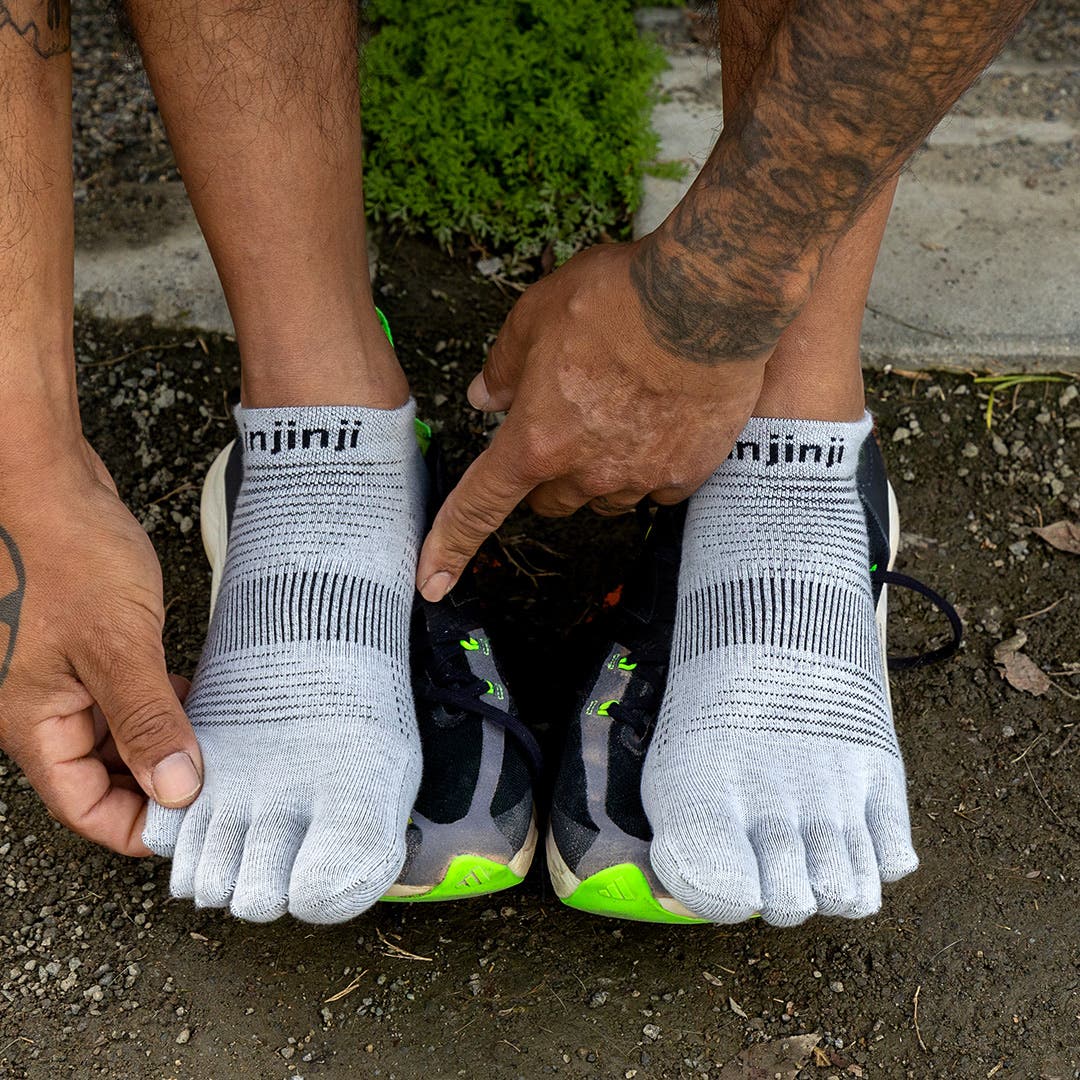Whether you’re a runner, hiker, cyclist, or simply someone who enjoys spending time outdoors on your feet, you have probably suffered from a blister at some point. A bad blister can easily ruin a weekend backpacking trip or a demanding marathon.
It’s important to know what causes blisters, and how to prevent blisters from occurring in the future. We’ve outlined everything you need to know about dealing with blisters so you can enjoy your outdoor activities blister-free.


What causes blisters?
-
Friction: When there is repeated rubbing or pressure on the skin, it can lead to irritation and eventually blister formation. This commonly happens when footwear or clothing rubs against the skin when running or exercising.
-
Moisture: Whether from sweat or water, moisture exacerbates friction by softening the skin, making it more prone to damage. Factors like sweat, rain, or wet conditions can increase the likelihood of blisters forming, especially if shoes or socks become saturated.
-
Ill-fitting Gear: Shoes or socks that are too tight or too loose can cause friction and rubbing, leading to blisters. Poorly fitting footwear can also create pressure points or hotspots that increase the risk of blister formation.
How To Prevent Blisters
-
Reduce friction with toesocks: With their individual, five-toe sleeves, Injinji toesocks help to prevent blisters between your toes by eliminating skin-on-skin friction. While traditional socks compress toes tightly together, toesocks allow your toes to breathe and promote a more natural foot splay. Haven’t worn toesocks before? We recommend starting with a pair from the bestsellers list.
-
Choose moisture-wicking fibers: Opt for socks that keep feet cool and dry. Injinji toesocks are available in two different types of soft, sweat-wicking fibers: CoolMax® EcoMade and Merino wool. CoolMax® EcoMade utilizes polyester fibers to provide superior moisture management, while Merino wool provides naturally engineered odor resistance and enhanced breathability.
-
Wear proper footwear: Selecting shoes that fit well and provide ample toe room will reduce friction between the toes and help to prevent blisters. If you have a wider foot or want a bit more room for your toes to move, opting for a sneaker brand with a wider toebox – like Altra or Topo Athletic – may be a good option for you. For an added layer of protection from chafing, try using a light layer of Vaseline or other balms under your socks.
How To Treat Blisters
If you feel discomfort or irritation, it’s best to slow down and assess the affected area. Here are a few tips for treating blisters:
-
Tape: KT tape or blister tape can help protect the area from further friction until you can properly treat it.
-
Leave the blister alone: If you do not have a safe and clean way to drain the blister (like a sterile needle), it’s best to leave it alone.
-
Apply antibiotic cream: If the blister has been drained, applying an antibiotic cream can help to prevent further infection. Covering with a sterile bandage can also keep it protected from irritation.
-
Wear thicker socks until the blister heals: Consider wearing socks with more padding and protection to provide additional cushioning to the blistered areas. Injinji's Midweight or Midweight with Padded Toes socks have soft, terry padding in the toesleeves and toebox, which are great for maximum comfort. This is a popular option for ultra runners who spend hours on their feet!
Want to know more about the best ways to treat blisters? Team Injinji Athlete and endurance runner Alyssa Clark has some more tips on proper foot care for runners.
If you’ve never worn Injinji socks, but are a victim to pesky blisters, it’s time to give toesocks a try! We’d recommend starting with the Run series, our most popular choice among athletes and runners.








